Alcohol by volume 40–55% Colour Green or Yellow | Proof (US) 80–110 Flavour herbal Introduced 1764 | |
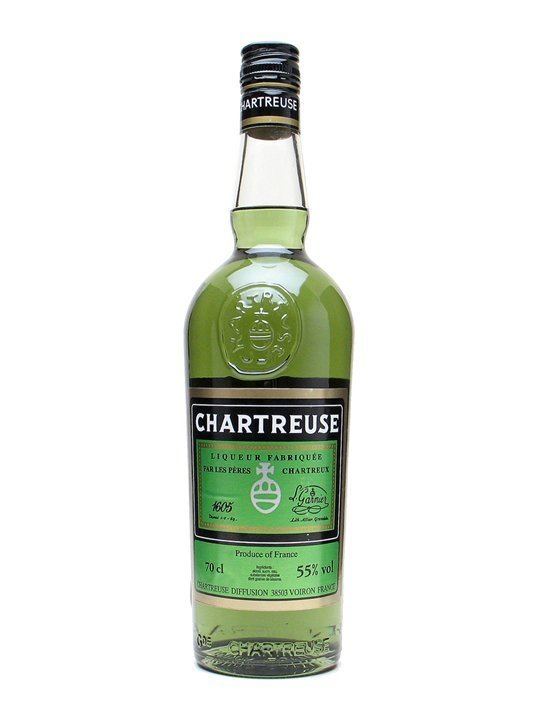 | ||
Similar Bénédictine, Maraschino, Absinthe, Génépi, Angostura bitters | ||
Chartreuse ([ʃaʁtʁøz]) is a French liqueur made by the Carthusian Monks since 1737 according to the instructions set out in a manuscript given to them by François Annibal d'Estrées in 1605. It is composed of distilled alcohol aged with 130 herbs, plants and flowers. The liqueur is named after the monks' Grande Chartreuse monastery, located in the Chartreuse Mountains in the general region of Grenoble in France. The liqueur is produced in their distillery in the nearby town of Voiron (Isère). Until the 1980s, there was another distillery at Tarragona in Spain.
Contents
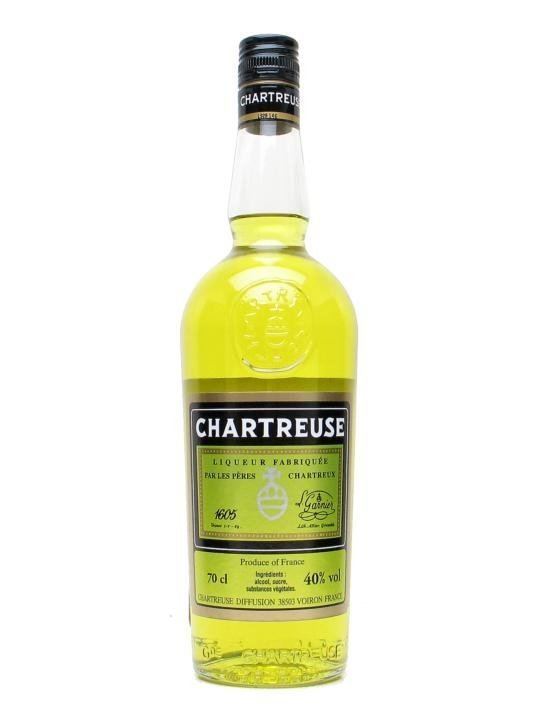
Chartreuse gives its name to the colour chartreuse, which was first used as a term of colour in 1884. It is one of the handful of liquors that continue to age and improve in the bottle.
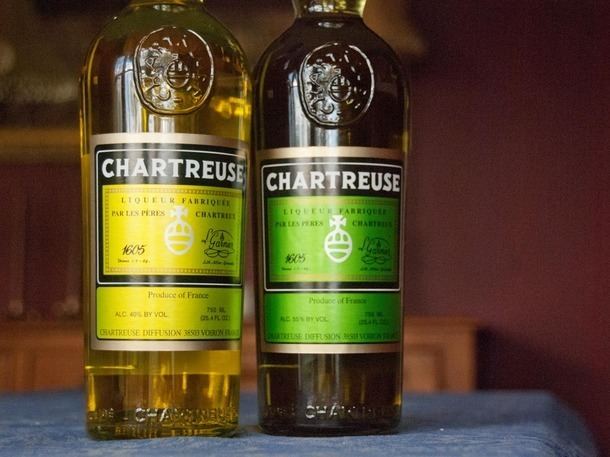
Types
The two types of Chartreuse are:
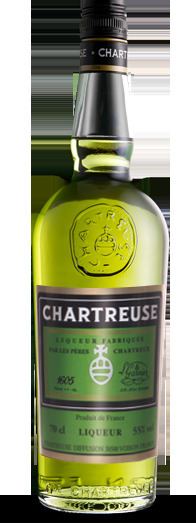
Also made by the monks of Chartreuse are:
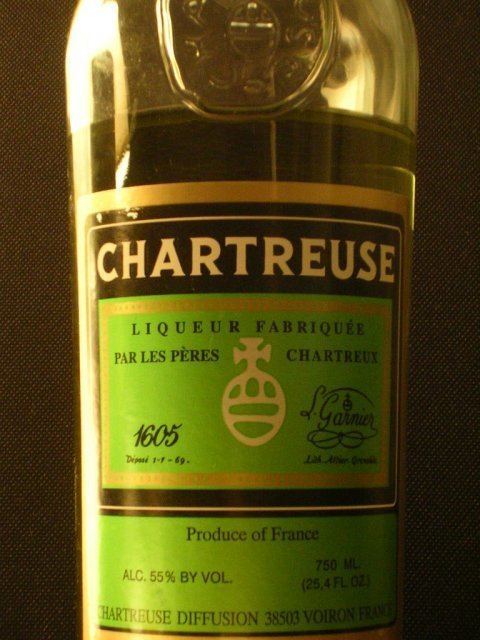
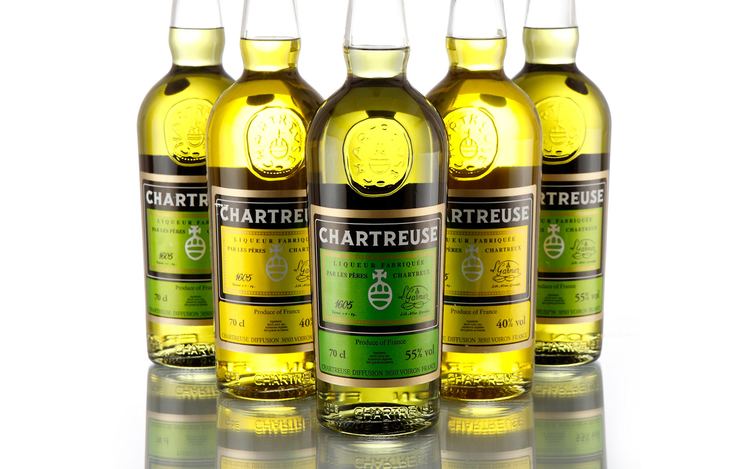
Furthermore, the monks make a "Génépi". Génépi is the general term in the Alps for a homemade or local liquor featuring local mountain flora. There are hundreds or even thousands of different Génépi liquors made, many simply by families for their own use each year. As they have been making Chartreuse from local plants for centuries, the monks have recently (2000s) made a Génépi as a sideline product. It is labelled "Génépi des Pères Chartreux" and is generally only available locally in a 70cl bottle, usually labelled 40% alcohol.
Flavour
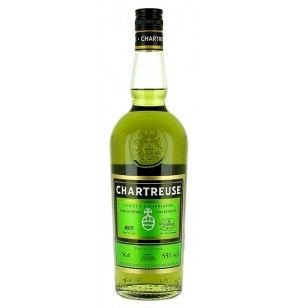
Chartreuse has a very strong characteristic taste. It is very sweet, but becomes both spicy and pungent. It is comparable to other herbal liqueurs such as Galliano, Liquore Strega or Kräuterlikör, though it is distinctively more vegetal. Like other liqueurs, its flavour is sensitive to serving temperature. If straight, it can be served very cold, but is often served at room temperature. It is also featured in some cocktails. Some mixed drink recipes call for only a few drops of Chartreuse due to the assertive flavour. It is popular in French ski resorts where it is mixed with hot chocolate and called Green Chaud.
History
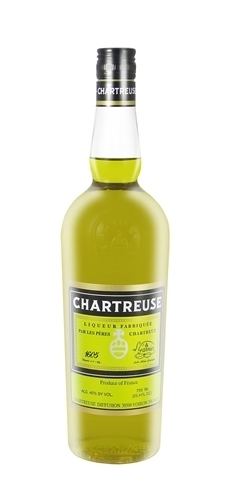
According to tradition, a marshal of artillery to French king Henry IV, François Hannibal d'Estrées, presented the Carthusian monks at Vauvert, near Paris, with an alchemical manuscript that contained a recipe for an "elixir of long life" in 1605. The recipe eventually reached the religious order's headquarters at the Grande Chartreuse monastery, in Voiron, near Grenoble. It has since then been used to produce the "Elixir Végétal de la Grande Chartreuse". The formula is said to include 130 herbs, plants and flowers and secret ingredients combined in a wine alcohol base.
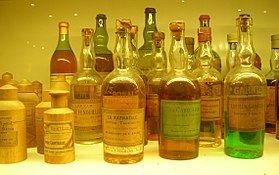
The book The Practical Hotel Steward (1900) states that green chartreuse contains "cinnamon, mace, lemon balm, dried hyssop flower tops, peppermint, thyme, costmary, arnica flowers, genepi, and angelica roots", and that yellow chartreuse is, "Similar to above, adding cardamom seeds and socctrine aloes." The monks intended their liqueur to be used as medicine. The recipe was further enhanced in 1737 by Brother Gérome Maubec.
The beverage soon became popular, and in 1764 the monks adapted the elixir recipe to make what is now called Green Chartreuse. In 1793, the monks were expelled from France, and manufacture of the liqueur ceased. Several years later they were allowed to return. In 1838, they developed Yellow Chartreuse, a sweeter, 40% alcohol liqueur (80° proof) coloured with saffron.
The monks were again expelled from the monastery following a French law in 1903, and their real property, including the distillery, was confiscated by the government. The monks took their secret recipe to their refuge in Tarragona, Catalonia, and began producing their liqueurs with the same label, but with an additional label which said Liqueur fabriquée à Tarragone par les Pères Chartreux ("liquor manufactured in Tarragona by the Carthusian Fathers"). At the same time, the "Compagnie Fermière de la Grande Chartreuse", a corporation in Voiron that obtained the Chartreuse assets, produced a liqueur without benefit of the monks' recipe which they sold as Chartreuse. While the French corporation was acting legally in France, the monks successfully prevented the export of the liqueur to many other countries, since the order retained ownership of its foreign trademark registrations, largely because the recipe had been kept secret. Sales at the French company were very poor, and by 1927, it faced bankruptcy. A group of local businessmen in Voiron bought all the shares at a low price and sent them as a gift to the monks in Tarragona.
After regaining possession of the distillery, the Carthusian brothers returned to the monastery with the tacit approval of the French government and began to produce Chartreuse once again. Despite the eviction law, when a mudslide destroyed the distillery in 1935, the French government assigned Army engineers to relocate and rebuild it at a location near Voiron where the monks had previously set up a distribution point. After World War II, the government lifted the expulsion order, making the Carthusian brothers once again legal French residents.
Today, the liqueurs are produced in Voiron using the herbal mixture prepared by two monks at Grande Chartreuse. Other related alcoholic beverages are manufactured in the same distillery (e.g. Génépi). The exact recipes for all forms of Chartreuse remain trade secrets and are known at any given time only to the two monks who prepare the herbal mixture. Chartreuse is also used as an addition to other drinks.
Accolades
Chartreuse liquors generally have performed well at international spirit ratings competitions. The basic green offering has won silver and double gold medals from the San Francisco World Spirits Competition. It has also earned an above-average score of 93 from the Beverage Testing Institute and has been given scores in the 96-100 interval by Wine Enthusiast. The VEP Green and VEP Yellow have generally earned similarly impressive scores. The basic Yellow Chartreuse has received more modest (though still average or above) ratings.
